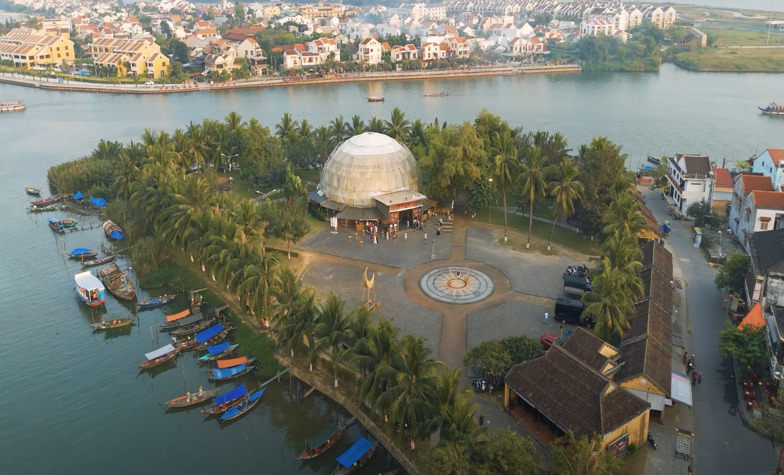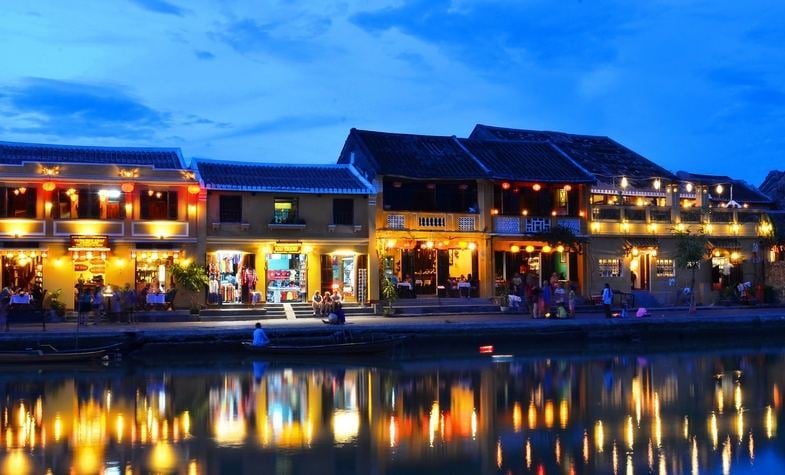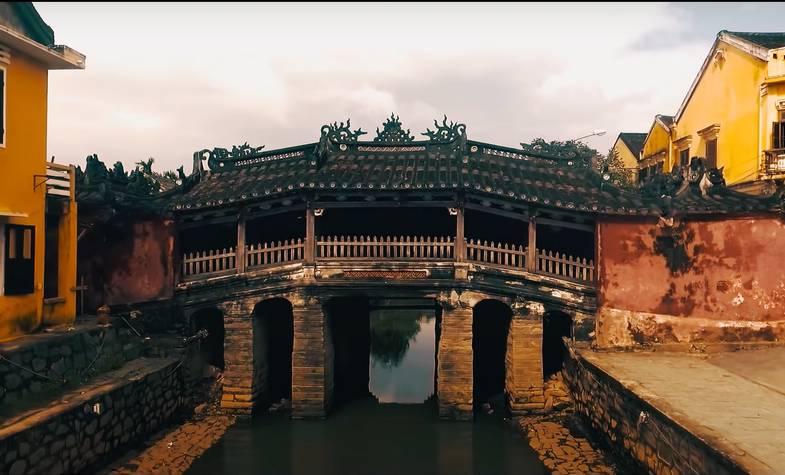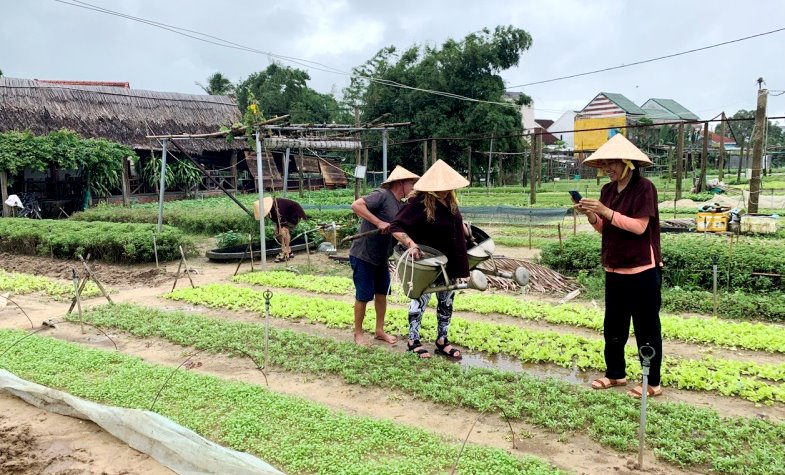Hoi An Ancient Town - The Lanterns City
The Hoian travel guide will take you on a journey through one of Vietnam’s most charming destinations - where time seems to pause in the nostalgic streets of the ancient town, glowing lanterns, and irresistible local flavors. From dreamy beaches to historic temples, from lively night markets to traditional craft villages, Hoi An offers a perfect mix of peace and vibrancy. Let’s start exploring Hoi An to the fullest with the most practical and inspiring tips!
Best time to visit Hoi An
Hoi An is beautiful all year round, but the best time to visit is from February to April. During this period, the weather is pleasantly warm with gentle sunshine, low humidity, and no intense heat - perfect for strolling around the ancient town, cycling through the countryside, or watching the sunrise by the Hoai River. The beaches of An Bang and Cua Dai are also calm and clear, ideal for a relaxing getaway. With dry and cool weather, every experience in Hoi An feels more peaceful, enjoyable, and memorable.
To truly feel the soul of Hoi An, visit on the full moon night of the lunar month, when the electric lights go off and the ancient town glows under the soft, magical light of lanterns - a dreamlike experience. Don’t miss the Lantern Festival during Tet (Lunar New Year) and Mid-Autumn Festival, or traditional celebrations like the death anniversary of Kim Bong carpentry ancestors and Thanh Ha pottery village. These events are rich in local culture, where you can immerse yourself in folk activities such as releasing flower lanterns, lion dancing, and playing bai choi (a traditional Vietnamese game).
Things to do & see in Hoi An
Hoi An Ancient Town
Located along the peaceful Thu Bon River in Quang Nam Province, Hoi An Ancient Town is a must-visit destination in Vietnam. With its moss-covered rooftops, charming old architecture, and colorful lanterns, it feels like stepping into a nostalgic movie scene. The best time to visit is from late afternoon to evening, when the town lights up and the atmosphere turns magical and romantic. Stroll through the lantern-lit streets, float a candle-lit paper flower on the river, savor a bowl of cao lầu, or join in traditional folk games - Hoi An promises a gentle yet utterly captivating experience

Hoi An Ancient Town - Hoi An Old Town
Hoi An Riverside
Hoi An Riverside – the poetic heart of the ancient town – stretches along the gentle Hoai River, right in the center of Hoi An, Quang Nam Province. It’s a place you must visit at least once to truly feel the romantic, timeless charm of Vietnam. The best time to explore is from late afternoon to evening, when the sunset casts a golden glow and hundreds of lanterns light up the river in a magical display. Hop on a boat to release candle-lit lanterns, sip coffee by the water, enjoy traditional folk performances, or wander through the vibrant night market. Every moment here is like a living painting you'll never forget

Thu Bon Riverside, Hoi An Vietnam
Japanese Covered Bridge
Located in the heart of Hoi An Ancient Town, the Japanese Covered Bridge (Chùa Cầu) is an iconic architectural gem symbolizing the cultural fusion between Vietnam and Japan. With its curved tiled roof and intricate wooden carvings, the bridge is not only picture-perfect but also holds deep spiritual meaning for locals. Visit in the early morning or at sunset, when the soft light beautifully highlights its detailed craftsmanship. Whether you're snapping photos, learning about its 400-year-old history, or simply pausing to admire the peaceful charm of the old town from the bridge, this is a must-visit spot on any Hoi An journey!

Japanese Covered Bridge, Hoi An Vietnam
Hoi An Central Market
Located on Tran Phu Street, right by the Hoai River, Hoi An Central Market is the perfect place to experience the authentic rhythm of local life. The best time to visit is early in the morning, when the market buzzes with energy, fresh produce fills the stalls, and vendors call out cheerfully. You’ll discover traditional handicrafts, taste local specialties like cao lầu or white rose dumplings, and pick up charming souvenirs. More than just a shopping spot, it’s a vibrant journey into the culture and cuisine of Central Vietnam.
Museum of Trade Ceramics
Tucked away at 80 Tran Phu Street – right in the heart of Hoi An Ancient Town – the Museum of Trade Ceramics is a time capsule that takes you back to the golden age of international trade. Housed in a beautifully preserved two-story wooden home from the 19th century, the museum features over 400 priceless ceramic artifacts from Japan, China, Thailand, and more, telling the vibrant story of Hoi An as a key port on the maritime Silk Road. Visit in the early morning to fully soak in the peaceful, nostalgic atmosphere. Don’t miss the second-floor balcony, where you can gaze over the quiet streets and feel history whispering through the mossy rooftops
Cua Dai Beach
Just 5km east of Hoi An Ancient Town, Cua Dai Beach is a refreshing seaside escape for ocean lovers. With its long stretch of soft white sand, crystal-clear water, and dreamy swaying coconut palms, it’s the perfect spot to unwind after days of exploring the town. The best time to visit is early morning or at sunset, when the sun is gentle, the breeze is calm, and the view feels almost magical. Here, you can swim, try water sports, stroll along the shoreline, or enjoy fresh seafood at beachside eateries. One visit to Cua Dai, and you’ll be longing to return.
An Bang Beach
Just 4km from Hoi An’s center, An Bang Beach is one of Central Vietnam’s most beautiful coastal gems - peaceful, untouched, and full of charm. With emerald waters, gentle waves, and fresh air, it’s the perfect place to relax and recharge your spirit. Come early to catch a stunning sunrise or late afternoon to chill with sunset views and beachside music. Besides swimming, you can try paddleboarding, surfing, or simply lounge on a wooden chair, sip a cocktail, and soak in the laid-back vibes. It’s a little slice of paradise you won’t want to leave.
Cham Islands
Just 15km off Cua Dai Beach, Cham Islands (Cù Lao Chàm) is a tropical paradise you can’t miss when visiting Hoi An. Known for its crystal-clear waters, vibrant coral reefs, and cool ocean breeze all year round, this island cluster offers the perfect escape. Head out in the morning to catch a speedboat to the islands and spend the day snorkeling, swimming, exploring fishing villages, or savoring fresh seafood. More than just an eco-tourism spot, Cham Islands lets you experience rare natural beauty and a peaceful, untouched charm that stays with you long after you leave.
Tra Que Vegetable Village
Just 3km from Hoi An Ancient Town, Tra Que Vegetable Village is a green getaway for nature lovers and anyone curious about authentic rural life. This charming village is famous for its fresh herbs, grown the traditional way - chemical-free and full of flavor. Visit in the early morning to breathe in the fresh air and join local farmers in digging, planting, and watering the crops. You can also take a rustic cooking class and enjoy a delicious meal right in the middle of lush vegetable gardens. It’s a peaceful, hands-on experience that captures the true spirit of Hoi An.

My Son Sanctuary
My Son Sanctuary lies about 40km southwest of Hoi An, nestled deep in the lush mountains of Quang Nam. This ancient complex of Cham towers was once a sacred site of the Champa Kingdom, showcasing unique Hindu architecture and cultural heritage. Visit in the early morning to enjoy the fresh air and watch the sunlight filter through moss-covered ruins, creating a magical, time-travel-like atmosphere. Besides exploring the temples, don’t miss the chance to watch a traditional Cham dance performance right at the site – a vibrant cultural experience that brings the past vividly to life.
How to travel to Hoi An
By air
To get to Hoi An by plane, the best option is to fly into Da Nang International Airport, located about 30km from the ancient town. From the airport, you can take a taxi, private car, or hop on a bus to reach Hoi An in around 45 minutes. For a budget-friendly option, Bus No.1 (Da Nang – Hoi An route) runs regularly and offers a smooth ride. It’s a quick and easy way to kick off your journey to the charming streets of Hoi An!
By train
Another option to travel to Hoi An is taking a train to Danang railway station. A lot of tourists from Hanoi, Hue, Quy Nhon and Nha Trang use the railway network to reach Hoi An from Danang.
By car
Getting to Hoi An by car is a perfect option for those who love flexibility and control. From Da Nang, it takes just around 45 minutes to drive along a beautiful coastal road. If you're coming from Hue or nearby provinces, you can rent a private car or take a high-quality bus. Traveling by car lets you stop along the way to enjoy the scenery, taste local specialties, and soak in the beauty of Central Vietnam at your own pace!
Hoi An isn’t just a destination – it’s a journey back in time, where heritage and modern life blend seamlessly. With this Hoi An travel guide, you’ll have all the tips you need to explore the ancient town to the fullest – from food and culture to untouched beaches and peaceful countryside. Let every step you take in Hoi An become a memorable part of your adventure through Vietnam
Our tours you may like:
***
Travel Authentic Asia Company is your best choice for discovering the beauty of Southeast Asia. Our experienced and knowledgeable travel advisors are committed to helping you create a tailor-made tour and extraordinary experiences in this majestic region.
If you're looking for an authentic cultural experience, do not hesitate to contact Travel Authentic Asia to choose a Vietnam tour, Southeast Asia tour package or to customize your own style tour to South East Asia.

